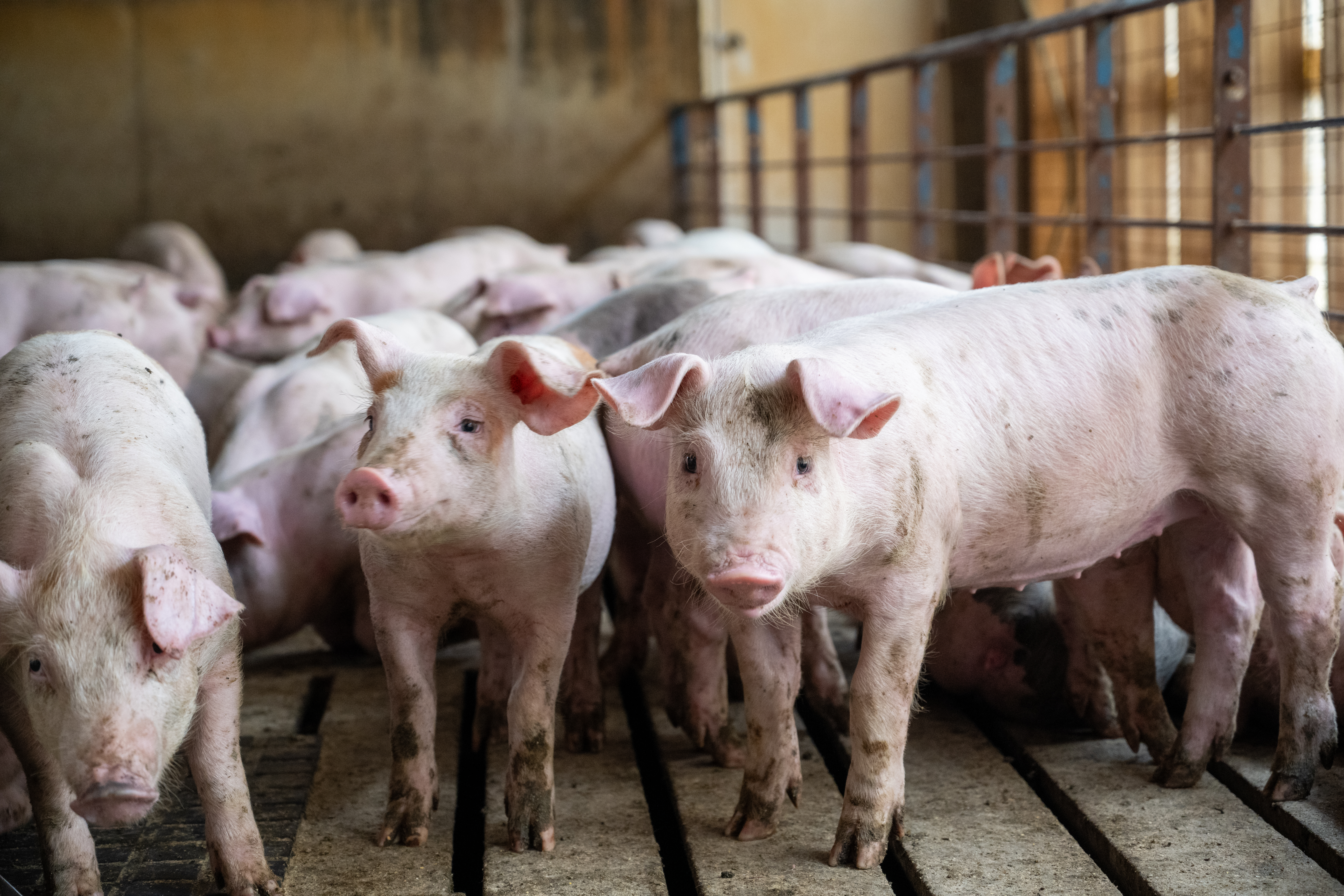An experiment was conducted to determine the performance of grow-finish pigs fed 1 of 4 diets with graded levels of soybean meal (SBM) formulated to investigate two potential confounding factors in evaluating increased dietary inclusion of SBM. First, diets were not formulated to be isocaloric; therefore, lower G:F was expected with reduced dietary net energy in high SBM diets. Secondly, diets were formulated to partially ameliorate the potential confounding effect of greater digestible amino acids (AA) in high SBM diets. The SBM levels were defined for the low treatment by least-cost formulation with no restrictions on crystalline AA (L-Lys, DL-Met, L-Thr, L-Trp, L-Val, and L-Ile). The high SBM diets within each phase were formulated to meet standardized ileal digestible (SID) AA requirements with no crystalline L-Lys. The SBM levels in the 2 intermediate treatments were equally spaced between the high and low treatments. After defining the SBM levels for each diet, crystalline AA were added to the lower SBM diets to be closer to or match the SID Thr, Trp, Ile, and Val present in the highest SBM treatment. A total of 1,042 pigs [28.7 ± 0.3 kg; mixed sex; PIC 337] were allotted to 12 replicate pens per treatment (21 – 22 pigs per pen) and randomly allotted within location block to treatment. A 6-phase feeding program was managed according to pre-determined feed budgets, and pigs were weighed by pen approximately every other week. Data were analyzed using the lme4 package of R 4.1.2, and the model included the fixed effect of treatment and the random effect of block. Linear and quadratic contrast statements were used to test the effects of increasing SBM in diets. Data are presented in combined weigh periods (Table 1). Average body weight was not different at any time point, including final body weight. In period 1 (day 0-30), no differences in average daily gain (ADG) or average daily feed intake (ADFI) were detected; however, feed efficiency (G:F) was improved (linear, P < 0.05) with greater inclusion of SBM. In period 2 (day 30-63), ADG and G:F increased (quadratic, P < 0.05) with greater inclusion of SBM. In period 3 (day 63-99), G:F was reduced (quadratic, P < 0.05), driven by increased ADFI (linear, P < 0.05). With opposing performance responses observed between early and later periods, no differences in performance were detected overall. In conclusion, greater SBM in non-isocaloric diets improved G:F in early growth periods, but not in late finishing. The improved G:F observed in the first two periods was contrary to the hypothesis and could be due to greater net energy in SBM than expected, greater provisions of AA beyond Lys, Met, Thr, Trp, Val, and Ile, or something else.
Li, Q., M. McGhee, C. Pilcher and W. Schweer. 2025. Growth performance of grow-finish pigs fed different levels of soybean meal in non-isocaloric diets with provisions of digestible amino acids above estimated requirements. 2025 American Society of Animal Science Midwest Section meeting, Abstract 99.
